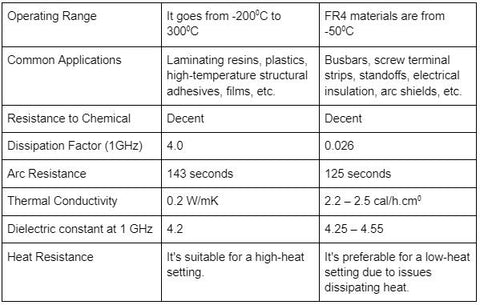Most manufacturers produce their printed circuit boards with FR4 materials. After all, these boards are cheap and useful for various applications. But, apart from the FR4, other printed circuit board materials may be ideal for specific applications. Hence, an excellent example of another board material is polyimide. Indeed, the polyimide PCB properties may suit your projects—based on different factors.
But, how do you know if the polyimide or polyamide PCBs are perfect for you?
So, in this article, you’ll learn about the features of these boards, how they affect your work, and more.
What is Polyimide PCB?
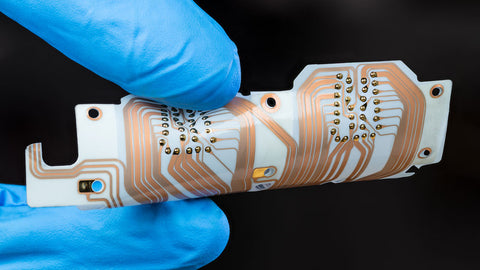
Polyimide circuit board
Polyamide or polyimides are polymers that comprise imide monomers. This category of polymers contains different materials (synthetic and natural). That said, examples of natural polyamides are wool, silk, etc.
But, when it comes to producing PCBs, manufacturers use synthetically mass-produced polyamide for board bases.
How do you produce synthetic polyimides? In truth, you can do this by polymerizing different elements with imide structures. Plus, the process involves using maleic anhydride and bismaleimides.
Also, the type of additives and chemicals you use in polymerizing determines the kind of polyimide you’ll create.
Polyimide PCB Types
So, here are the different polyimide PCB types:
2nd Generation Polyimide or Pure Polyimide

Pure Polyimide
Source: Pixels
This PCB doesn’t have extra features like brominated flame retardants—which is a good thing. Again, that’s because lack of flame retardants translates to extreme stability and flexibility. So, you can use the pure polyimide or polyimide flex PCB for communicating and electrical devices.
No doubt, this polyimide PCB type is one of the oldest, but it has widespread use due to its thermal stability and extreme endurance against temperature.
3rd Generation Polyimide
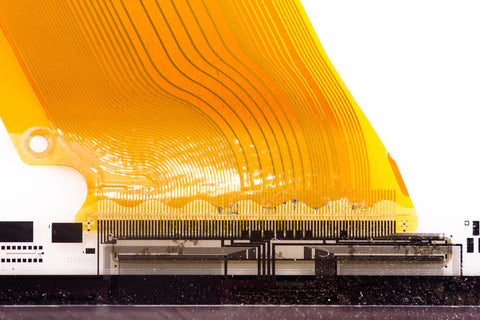
printed circuit board
In truth, the 3rd generation polyimide is an upgraded version of pure polyimides. Plus, it features extra additives that make them flame resistant. Also, this polyimide’s flammability resistance helps stop an accidental electric fire.
But this feature comes at a price because the 3rd generation polyimide isn’t thermally stable like the pure polyamides. Further, this polyimide is pretty easy to produce. Consequently, you can build this PCB in bulk, faster than another polyimide flexible PCB.
Filled Polyimide
You can classify the filler polyimide as multilayer PCBs. How? Because it consists of different filler materials, which helps prevent resin shrinkage. Also, the filled polyimide system comprises a filler and polyimide.
Further, resin shrinkage affects a board’s longevity. It makes circuit boards vulnerable to cracks and frail during the curing or drilling process. So, additional fillers help to boost a circuit board’s durability and strength.
Low-Flow Polyimides
The low-flow polyimides are the opposite of pure polyimides in terms of flexibility. You can also call them the rigid PCB. Plus, this feature is beneficial—especially if your application requires a rigid PCB that withstands adverse conditions.
Characteristics of the Polyimide PCB
You can get the best out of a polyimide PCB. But it’s crucial to understand the features first. Here they are:
Resistant to Chemicals
Polyimide PCB has chemical stability. In other words, you won’t get adverse effects when you expose the polyimide to different corrosive chemicals.
Thermal Stability
When there’s a wide range of temperatures, polyimides have extreme stability. And the PCB also supports standard hostile inhospitable temperatures (close to 260 degrees Celsius).
Also, polyimide PCBs have excellent thermal conductivity, resisting thermal damage during production or repair processes.
Remarkable Flexibility
Polyimide material has exceptional flexibility. Hence, you can use the material for manufacturing flexible and rigid-flex PCBs.
High Durability
Aside from the polyimide PCB’s resistance to chemicals and heat, they are resistant to physical stress. That is, the PCBs maintain their shape irrespective of the thermal and physical factors that affect them. Hence, they are perfect for field repairs and harsh environments applications.
Outstanding Tensile Strength
Tensile strength is when a material can support a maximum load without cracking when you stretch it, divided by the material’s original cross-sectional area.
So, even though the polyimide PCB is quite flexible, the material is solid and resilient to warping (twisted out of shape). Hence, polyimide PCBs are ideal for applications that need physical durability.
Applications
The most common applications of polyimide PCB include:
Automotive Electronics
Indeed, electric components in automotive industries usually face a lot of challenging conditions. Plus, they need to function regardless of extreme weather conditions (summer and cold) with continuous pushing of multiple components.
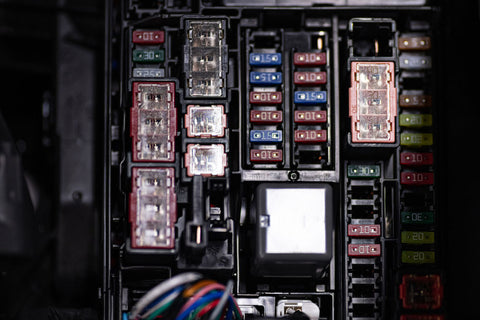
Car Fuse box with polyimide PCB
That said, automotive components naturally need a durable PCB, and the polyimide is up to the task.
Medical Industry
Before performing certain operations in the medical industry like prosthetics, advanced imaging, implants, etc., you need a high-efficiency application. In truth, you can get this high-performing efficiency with polyimide PCBs.
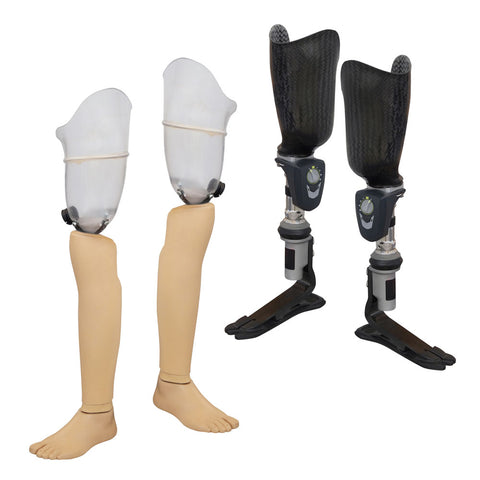
Prosthetic limbs using Polyimide PCB
Computer and Laptops
Indeed, flexibility and durability are the two significant factors that computers and laptops need to resist the physical stress of daily use. Also, the computer PCBs may become hot while operating.

Polyimide PCB in Laptop
Hence, you need to use a polyimide and rigid-flex PCB in the PCBs’ environment due to their thermal stability, flexibility, and durability.
Polyimide VS FR4 Materials
Here is a table that compares polyimide materials vs. FR4 materials

